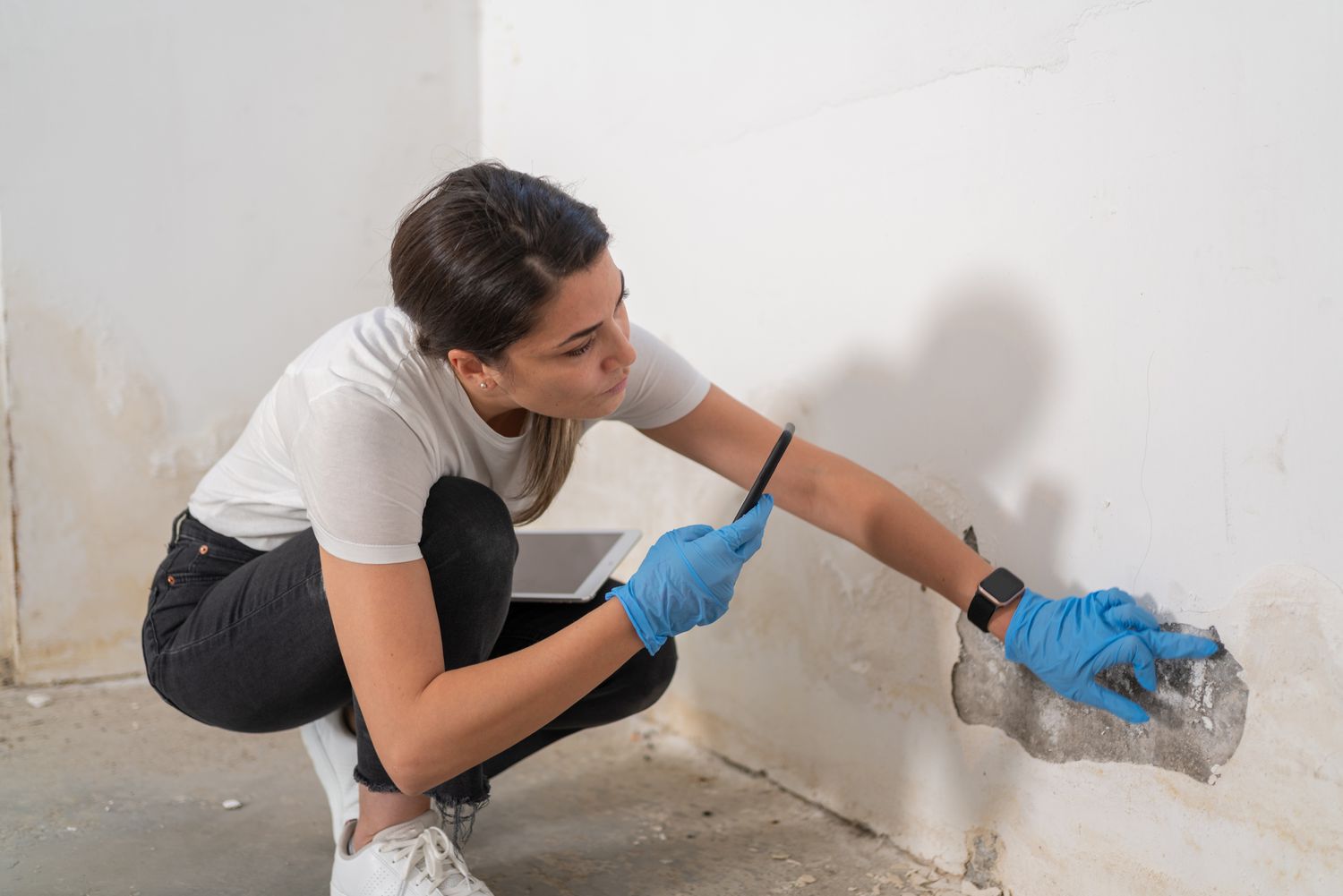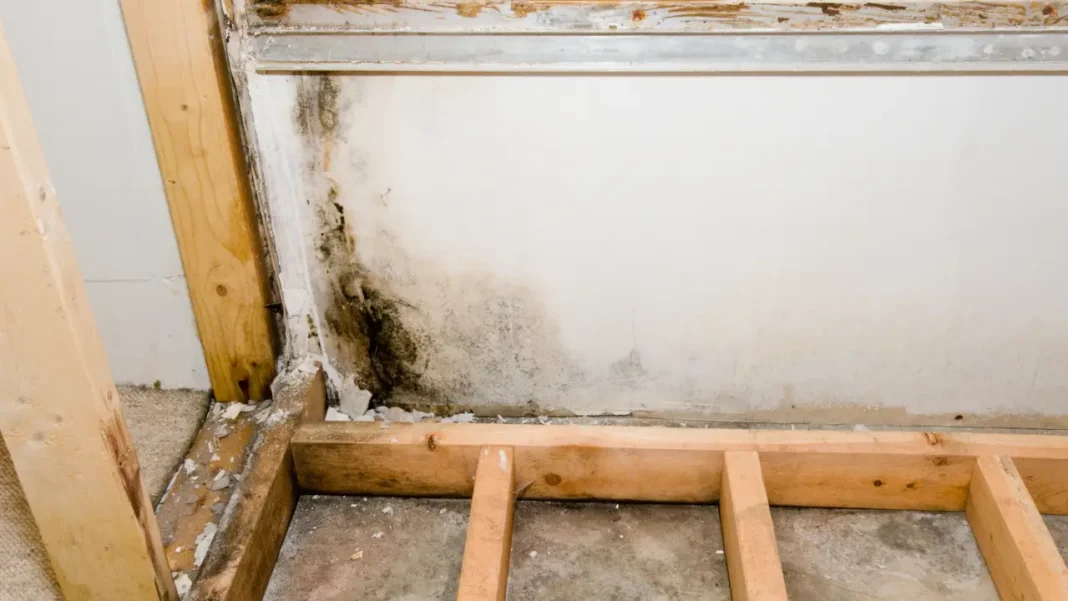Most home insurance policies cover mold only if it is caused by a sudden, unavoidable incident covered by the policy. The cause of mold damage determines whether your homeowners insurance covers it. If you find mold in your house, here are several choices to consider.
Does home insurance cover mold?
Mold is often only covered by homeowners insurance when it is caused by a “covered peril” – an occurrence covered by your policy, such as accidental water damage. These occurrences must be abrupt and unplanned.
For example, if your washing machine unexpectedly leaks and black mold grows on the floor, your homeowner’s insurance will most likely cover the cost of mold removal. If the floor is irreparably damaged, your insurance policy may cover the cost of replacement.
Your homeowners insurance coverage may cover mold damage from different events, such as:
- A broken water heater.
- Water damage caused by putting out a fire.
- A burst or frozen pipe.
Some insurance companies cap how much they will pay for mold removal. Even if your insurance approves your claim, you may still be responsible for part of the costs, such as your deductible.
Confused about your coverage? Read your policy carefully or contact your insurance agent to discuss the details.

When does homeowners insurance not cover mold?
Home insurance policies are intended to cover abrupt, unintentional damage, so they often do not cover mold caused by carelessness or a lack of regular maintenance. This includes mold damage caused by:
- Poorly sealed doors or windows.
- A leaking faucet that you have not repaired.
- Lack of ventilation in a damp environment, such as a restroom.
The following are some more prevalent causes of mold damage that are typically not covered by ordinary house insurance policies.
Sump pump failure and water backup damage.
Assume your sump pump fails, flooding your basement, or a city sewer line backs up into your bathroom. Mold can easily grow in such settings, but normal home insurance policies typically do not cover the cleanup.
However, many insurers provide sump pump and water backup coverage as an optional add-on.
Flood damage
Flooding is often not covered by standard homeowner policies. In the insurance sector, flooding refers to scenarios that affect many properties, such as overflowing rivers, tidal waves, or runoff from severe rain. If you live in a flood-prone location, consider purchasing separate flood insurance coverage.
However, even if you have flood insurance, it may not cover mold damage. The National Flood Insurance Program, the country’s largest flood insurance carrier, will only cover mold damage if you are unable to access your house following a flood.
Mold damage coverage varies according to the flood insurance policy. If you’re not sure what your coverage covers, speak with your insurer.
Other coverage options
Though a regular house insurance policy does not typically cover the aforementioned scenarios, this does not imply you are out of luck. Your insurance may also offer the following options.
Sump pump failure and water backup coverage can cover the cost of water and mold damage caused by a clogged sewage line, malfunctioning sump pump, or backed-up drain. However, this coverage will most likely not cover gradual issues such as water pouring into your home’s foundation. It also excludes coverage for flooding caused by a rising river or lake near your home.
Hidden water damage coverage compensates for damage caused by leaks that are not visible, like a burst pipe behind a wall. It could also include mold remediation. However, not all firms offer this insurance.
Should you file a mold claim?
Even if you believe your insurer would pay for mold damage, submitting a claim isn’t always worthwhile. Mold cleanup in the United States costs an average of $2,235, according to Angi, a home services website. If your homeowner’s insurance deductible is $2,000, your insurer will only pay $235 toward the average cost. And because filing a claim frequently results with higher rates, you may end up losing money in the end.
If you have other damage besides mold, or a large infestation that will cost far more than your deductible to clean up, submitting a claim is more likely to be worthwhile.
How to file a mold claim
Mold can begin to grow in as little as one day, so acting quickly is essential.
- Please stop the leak as soon as feasible. If you have a water leak or a busted pipe in your home, turn off the main water valve right away. Make sure you know where the main water shut-off valve is so you don’t have to scramble during an emergency.
- File as soon as possible. Depending on your insurance, you may be able to file your claim online, via app, or over the phone. The sooner you file, the quicker you can clean up the mess (and the less time mold has to grow).
- Document the damage. Take photos and videos of any mold and water damage you discover. Create a list of all damaged items. Be as comprehensive and honest as possible. False reporting, even if unintentional, can undermine your argument.
- Remove excess water and dehumidify the area. To dry the area, remove any standing water and use a dehumidifier or air conditioner. Place damp items outside in a secure location to dry. If you’re having problems cleaning up the water, get a professional. Your insurance representative may be able to recommend reputable water removal contractors in your region.
- Make temporary repairs to prevent additional harm. You don’t want to undertake extensive repairs before filing your claim, but once you’ve recorded the damage, make temporary repairs to protect your house from future problems. For example, if your basement is flooded, you can remove the damp carpet. Keep all receipts for purchases made for cleanup and repairs.
What to do if homeowners insurance won’t pay for your mold damage
If your insurance company refused your mold claim but you still believe the damage should be covered, you can try to appeal your claim. Discover how to contest a home insurance claim settlement or denial.
However, if you know the mold was caused by anything that your insurance does not cover, you will be responsible for the cleanup. You may be able to remove minor patches of mold yourself, but for larger projects, consider hiring a professional.
Make sure the contractor you hire is licensed and insured, and that they have prior experience with mold remediation.
Stopping mold before it starts
Here are some strategies to keep mold from forming in your home:
- Inspect your pipes, faucets, and hoses on a regular basis and promptly repair any leaks.
- Make sure your gutters and downspouts divert rainwater away from your property.
- Air conditioners and dehumidifiers can help you keep your home’s humidity levels low.
- Install exhaust fans to improve the ventilation in your bathroom and kitchen.
- Avoid installing carpet in moisture-prone places such as basements or bathrooms.
- Maintain a clean gutter system and assess your roof for leaks on a regular basis.
- Consider changing the hoses on your dishwasher, washer, refrigerator, and other large appliances every five years.


